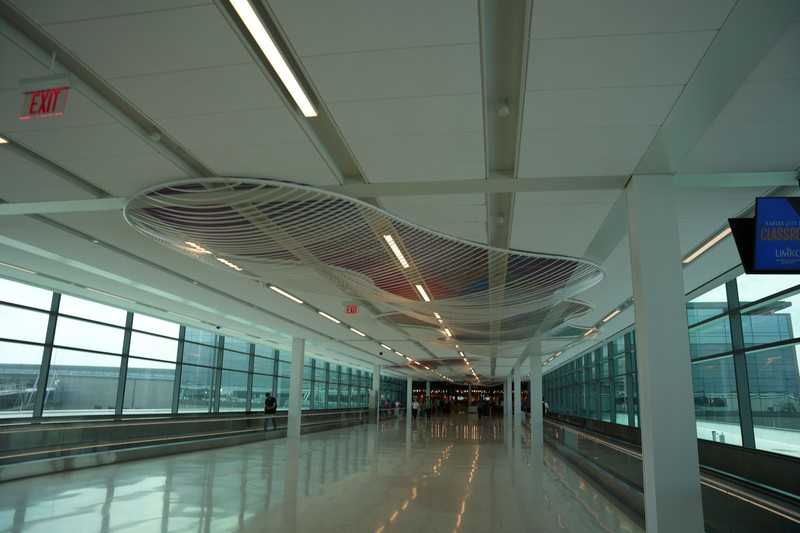Cloud Gazing: Concourse Connector Ceiling
Introduction
Text-to-speech Audio
The airport's two concourses are connected through an elevated walkway that includes ten colorful "clouds" created using aluminum, printed acoustic tiles, and nylon straps. Travelers are surrounded by natural light on both sides thanks to floor-to-ceiling windows while the artwork on the ceiling creates an appearance of moving through the sky as they walk along the open concourse or utilize the moving walkways on both sides. In the middle of the connector, visitors are invited to explore the history of Kansas City and the history of aviation with four sets of panels that include media, historic photographs, and text. While most of the artwork in the airport was created by local artists, the commission for this piece went to SOFTlab of New York City.
Images

Cite This Entry
Trowbridge, David J. and Clio Admin. "Cloud Gazing: Concourse Connector Ceiling." Clio: Your Guide to History. October 25, 2023. Accessed March 31, 2025. https://theclio.com/entry/170491/tour/9
Sources
Cloud Gazing, Soft Lab New York City. Accessed September 19th, 2023. https://softlabnyc.com/project/cloud-gazing/.

